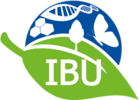Contact
Head of working group
Address
AG Hydrogeology and Landscape Hydrology
IBU, Fk. V, Building A1
Carl von Ossietzky Universität
D-26111 Oldenburg
Office
Renate Kettmann
Room: A1 1-130
Phone: ++49 (0) 441 / 798 - 4236
Fax: ++49 (0) 441 / 798 -3769
renate.kettmann@uol.de
BIME
BIME: Assessment of ground- and porewater-derived nutrient fluxes into the German North Sea - Is there a "Barrier Island Mass Effect (BIME)"?
Project summary
In the past three decades, submarine groundwater discharge (SGD) has been recognized as a major pathway for nutrients and trace metals. It can influence benthic community structures and trigger harmful algal blooms. Still, little is known about the physical, chemical and biological processes in the benthic boundary layer and surface sediments, where fresh groundwater and recirculating seawater are mixing and discharging. Also, the periodic and episodic dynamics of SGD in the coastal ecosystem are not well understood. In this novel interdisciplinary approach, the basic processes governing SGD dynamics, composition, and interaction with associated biota will be studied. Three groundwater-dominated barrier islands in the German North Sea (Mellum, Norderney, and Spiekeroog) with similar geology and climate, but different anthropogenic impacts, will be compared with regards to the magnitudes, biogeochemistry, and ecology of SGD. In the BIME project several working groups of the ICBM and the Max-Planck-Institute cooperate, and it is coordinated by the ICBM-MPI Bridging Group for Marine Geochemistry (ICBM). Our role in this project is to develop numerical models to quantify the SGD magnitudes over tidal and seasonal time scales. Further tritium/helium groundwater ages in the freshwater lenses and along the investigated beach transects will be measured in order to support model calibration as well as to provide important information about groundwater travel times.
Official webpage
Cooperation
Biogeochemistry Group, Max-Planck Institute for Marine Microbiology (MPI), Bremen
Hydrogeology and Landscape Hydrology Group, Institute for Biology and Environmental Sciences (IBU), University of Oldenburg
ICBM-MPI Bridging Group for Marine Geochemistry (ICBM), University of Oldenburg
Isotope Geochemistry Group (ICBM/MPI), University of Oldenburg, Germany
Marine Sensor Systems Group (ICBM), University of Oldenburg
Microbiogeochemistry Group (ICBM), University of Oldenburg
Paleomicrobiology Group (ICBM), University of Oldenburg
Financing
Niedersachsisches Ministerium für Wissenschaft und Kultur
Project duration
May 2016 - April 2020
Persons in charge
Publications
Grünenbaum, N., Günther, T., Greskowiak, J., Vienken, T., Müller-Petke, M., Massmann, G. (2023). Salinity distribution in the subterranean estuary of a meso-tidal high-energy beach characterized by Electrical Resistivity Tomography and Direct Push technology. Journal of Hydrology 617, 129074, https://doi.org/10.1016/j.jhydrol.2023.129074
Greskowiak, J. and Massmann, G. (2021). The impact of morphodynamics and storm floods on pore water flow and transport in the subterranean estuary. Hydrological Processes, e14050, https://doi.org/10.1002/hyp.14050
Grünenbaum, N., Ahrens, J., Beck, M., Gilfedder, B.S., Greskowiak, J., Kossack, M., Massmann, G. (2020). A multi-method approach for quantification of in-and exfiltration rates from the subterranean estuary of a high energy beach. Frontiers in Earth Science 8:571310. doi.org/10.3389/feart.2020.571310
Grünenbaum, N., Greskowiak, J., Sültenfuß, J. and Massmann, G. (2020) Groundwater flow and residence times below a meso-tidal high-energy beach: A model-based analyses of salinity patterns and 3H-3He groundwater ages. Journal of Hydrology, 124948.
Waska, H., Simon, H., Ahmerkamp, S., Greskowiak, J., Ahrens, J., Seibert, S.L., Schwalfenberg, K., Zielinski, O. and Dittmar, T. (2021). Molecular Traits of Dissolved Organic Matter in the Subterranean Estuary of a High-Energy Beach: Indications of Sources and Sinks. Front. Mar. Sci., 8:607083, doi.org/10.3389/fmars.2021.607083
H. Waska, J. Greskowiak, J. Ahrens, M. Beck, S. Ahmerkamp, P. Böning, H.-J. Brumsack, J. Degenhardt, C. Ehlert, B. Engelen, N. Grünenbaum, M. Holtappels, K. Pahnke, H. K. Marchant, G. Massmann, D. Meier, B. Schnetger, K. Schwalfenberg, H. Simon, V. Vandieken, O. Zielinski, T. Dittmar (2019). Spatial and temporal patterns of pore water chemistry in the inter-tidal zone of a high energy beach. Front. Mar. Sci. 6: 154

